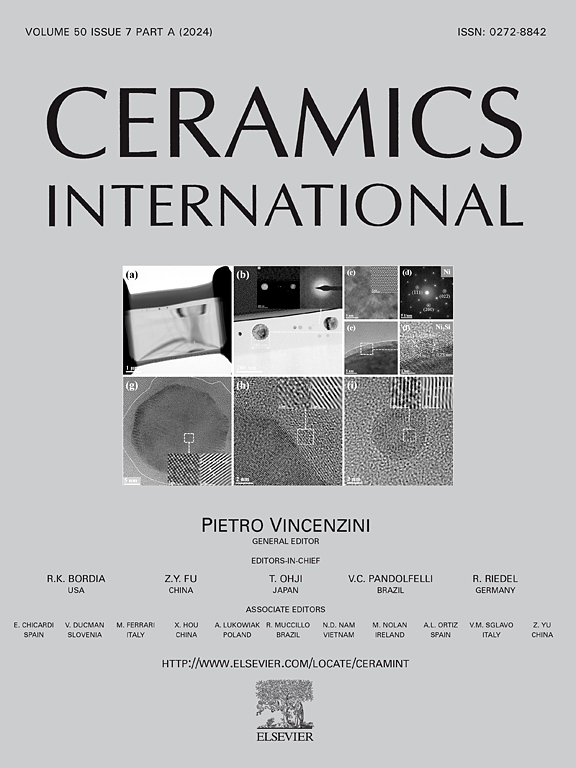One dimensionally arranged CoMoO4 an electrocatalyst for methanol assisted hydrogen production and supercapacitor applications
IF 5.1
2区 材料科学
Q1 MATERIALS SCIENCE, CERAMICS
引用次数: 0
Abstract
Energy crisis and environmental protection are primary concerns of modern societies. Electrocatalytic water splitting to produce hydrogen is an ideal protocol, but sluggish OER reduces the efficiency. In this regard, one-dimensionally arranged CoMoO4 nanorods are developed and applied for MOR (an alternative to OER), HER, and supercapacitor applications. The electrocatalyst shows excellent response for multiple electrochemical applications. It delivers a current density of 10 mA/cm2 at 1.64 V vs RHE for MOR, with a Tafel slope of 100.6 mV/dec. The electrocatalyst demonstrates the superiority of MOR by reducing the onset potential and overpotential by 150 mV and 60 mV, respectively, compared to OER. The CoMoO4 electrocatalyst also shows good performance for HER, delivering a current density of 10 mA/cm2 at a potential of −0.42 V vs RHE, with a Tafel slope of 107.2 mV/dec. The material exhibits excellent performance as a supercapacitor, delivering a specific capacitance of 117.84 F/g, an energy density of 5.89 Wh/kg and a power density of 316.82 W/kg at a current density of 1 A/g. The material also shows excellent stability for MOR (8000 s), HER (8000 s), and supercapacitor (500 CV cycles), retaining 67 %, 94 %, and 88.5 % efficiency, respectively, with excellent ECSA of 4.85 mF/cm2.
求助全文
约1分钟内获得全文
求助全文
来源期刊

Ceramics International
工程技术-材料科学:硅酸盐
CiteScore
9.40
自引率
15.40%
发文量
4558
审稿时长
25 days
期刊介绍:
Ceramics International covers the science of advanced ceramic materials. The journal encourages contributions that demonstrate how an understanding of the basic chemical and physical phenomena may direct materials design and stimulate ideas for new or improved processing techniques, in order to obtain materials with desired structural features and properties.
Ceramics International covers oxide and non-oxide ceramics, functional glasses, glass ceramics, amorphous inorganic non-metallic materials (and their combinations with metal and organic materials), in the form of particulates, dense or porous bodies, thin/thick films and laminated, graded and composite structures. Process related topics such as ceramic-ceramic joints or joining ceramics with dissimilar materials, as well as surface finishing and conditioning are also covered. Besides traditional processing techniques, manufacturing routes of interest include innovative procedures benefiting from externally applied stresses, electromagnetic fields and energetic beams, as well as top-down and self-assembly nanotechnology approaches. In addition, the journal welcomes submissions on bio-inspired and bio-enabled materials designs, experimentally validated multi scale modelling and simulation for materials design, and the use of the most advanced chemical and physical characterization techniques of structure, properties and behaviour.
Technologically relevant low-dimensional systems are a particular focus of Ceramics International. These include 0, 1 and 2-D nanomaterials (also covering CNTs, graphene and related materials, and diamond-like carbons), their nanocomposites, as well as nano-hybrids and hierarchical multifunctional nanostructures that might integrate molecular, biological and electronic components.
 求助内容:
求助内容: 应助结果提醒方式:
应助结果提醒方式:


